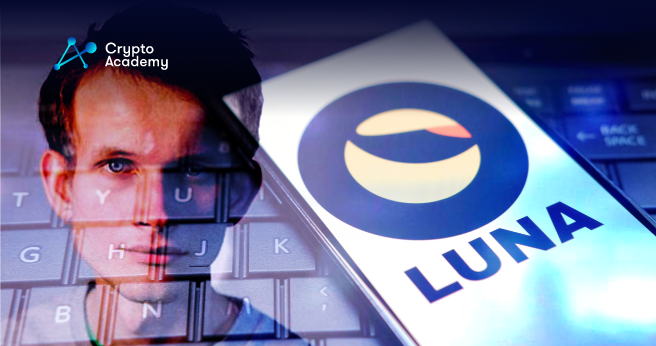The UST smallholder has been enticed by assurances of large stablecoin yields made by cryptocurrency influencers, according to Vitalik Buterin.
Vitalik Buterin, the co-founder of Ethereum (ETH), believes that any suggested reimbursement strategy for the ailing Terra project should favor small hodlers.
Crypto Academy previously reported that the Terra ecosystem went into a tailspin on May 9 last week resulting in Terra (LUNA) losing virtually all of its value and the TerraUSD (UST) stablecoin losing its peg to the US dollar, which was valued at $0.16 when the piece was published.
As Terra (LUNA) and TerraUSD (UST) investors suffer significant losses, the community of Terra is now seeking ways to repair the ecosystem and maybe provide financial assistance to the many people who have been financially harmed.
If the TerraUSD (UST) – dollar parity is gradually stable, one community recommendation is to repay all original deposits of small TerraUSD (UST) holders initially, in order to “greatly improve general morale and sentiment,” while finding out how to deal with debtors and larger investors afterward. $1 billion to $1.5 billion is the estimated cost of the payoff.
On Sunda, Buterin expressed endorsement for the proposal on Twitter, saying that the emphasis should be on the smaller hodlers who need the funds, prior to actually proposing that the whale hodlers should bear the damages: “Coordinated sympathy and relief for the average UST smallholder who got told something dumb about ‘20% interest rates on the US dollar’ by an influencer, personal responsibility and [sorry for your loss] SFYL for the wealthy.”
Although Vitalik Buterin did not advocate for regulation, he did mention that possible safeguards like financial deposit insurance could be valuable in these situations by adding that “An interesting unrelated one is Singapore employment law. Stronger regulation for low-earning employees, and a more figure-it-out-yourself approach for the wealthier. IMO things like this are good hybrid formulas.”
The obvious precedent is FDIC insurance (up to $250k per person)
An interesting unrelated one is Singapore employment law. Stronger regulation for low-earning employees, and a more figure-it-out-yourself approach for the wealthier.
IMO things like this are good hybrid formulas. pic.twitter.com/25XkfE8UVc
— vitalik.eth (@VitalikButerin) May 14, 2022
It is uncertain at this point if the initiative will be able to be restored or if it will attempt a temporary rebound to repay investor damages, even though it may be quite tough. It is also important to remember that the proposition linked to Buterin’s statements has been amended this week, and it now considers compensating all hodlers with up to a $50,000 per-wallet cap.
One proposal circulating on the cyberspace is to create a “TERRA 2” hard fork for the Terra blockchain, as well as a liquidity pool through which the US dollar peg of TerraUSD (UST) could be recovered.
Nonetheless, Changpeng Zhao, the founder, and CEO of Binance took to Twitter to invalidate the theory by saying that “forking does not give the new fork any value. That’s wishful thinking.”
Before the tailspin began, the Luna Foundation Guard (LFG) had $2.7 billion in Bitcoin (BTC) in its possession. Restoring the US Dollar peg of TerraUSD (UST) via the pool was also commented by Changpeng Zhao as follows: “where is all the BTC that was supposed to be used as reserves?”
Personal opinion. NFA.
This won't work.
– forking does not give the new fork any value. That's wishful thinking.
– one cannot void all transactions after an old snapshot, both on-chain and off-chain (exchanges).Where is all the BTC that was supposed to be used as reserves? https://t.co/9pvLOTlCYf
— CZ 🔶 Binance (@cz_binance) May 14, 2022
Do Kwon, the founder of Terraform Labs, has suggested a reorganization of the Terra blockchain in order to calibrate network ownership to give back to the community a total of 1 billion Terra (LUNA).
Prominent names in the crypto world, such as Billy Markus, the co-founder of Dogecoin (DOGE), have criticized Kwon’s planned “Terra Ecosystem Revival Plan,” calling for him to exit the industry and stating: “If they wanna pay off the victims of their dumbass failed protocol, instead of using new money from new victims, they should use the money they already funneled from investors to pay them back.”

